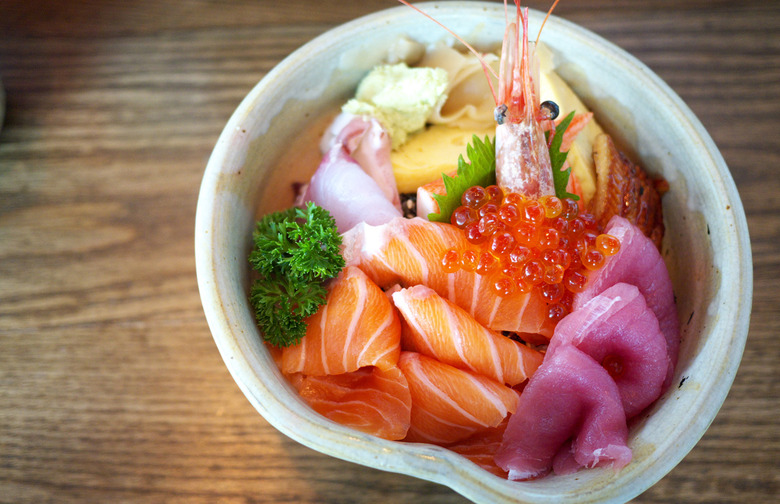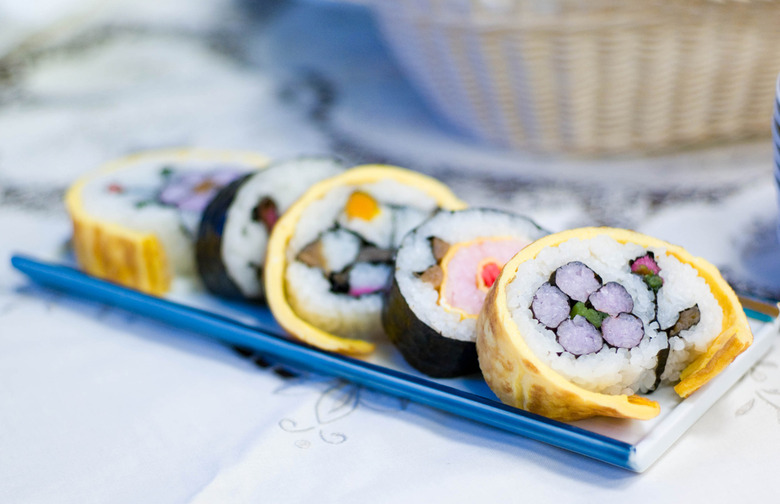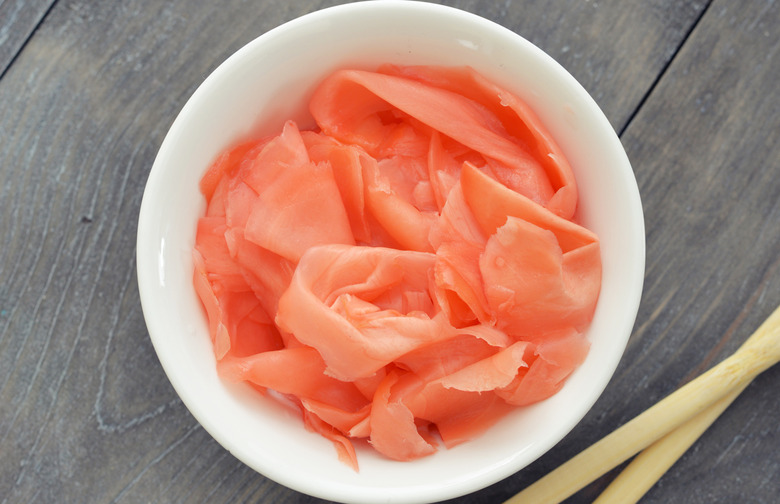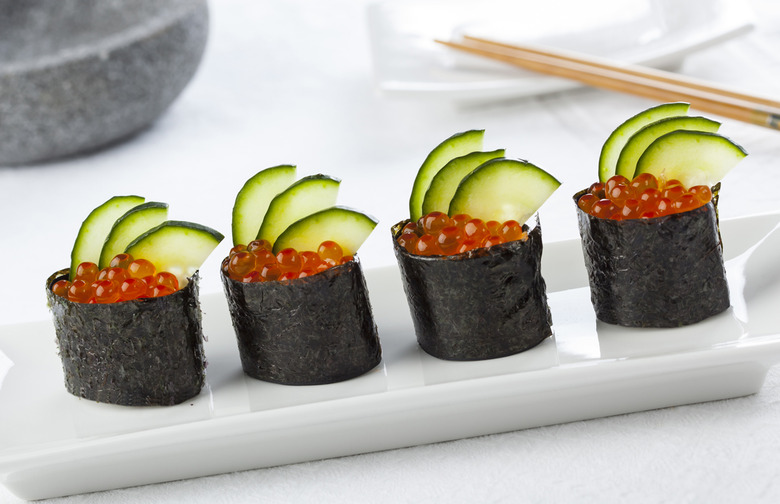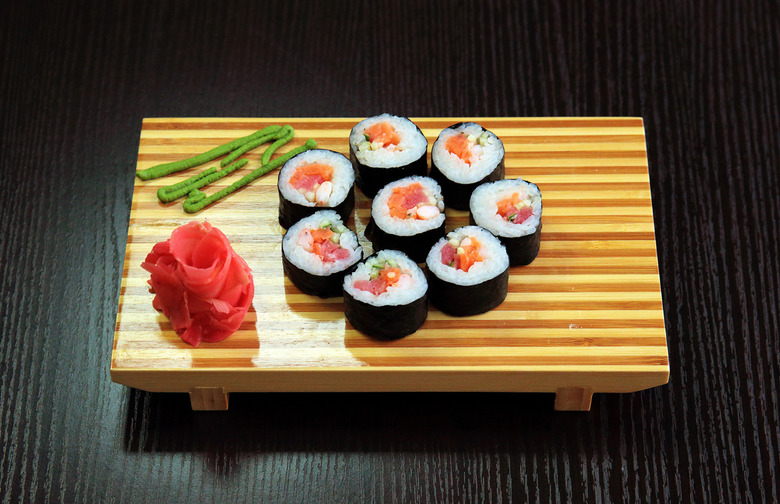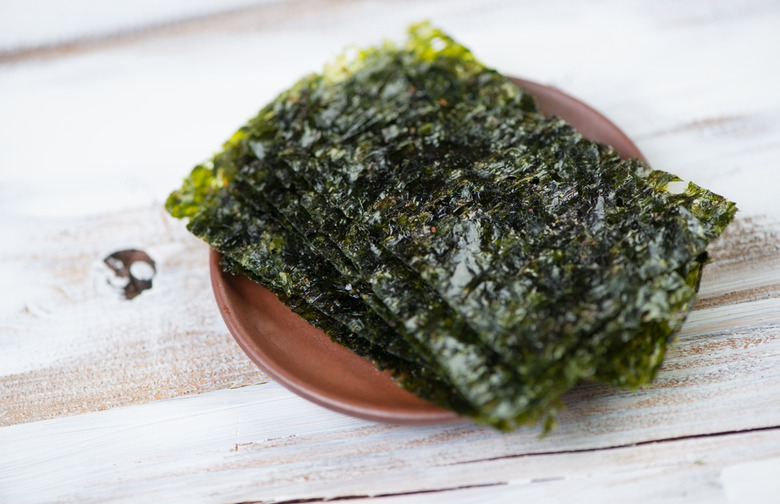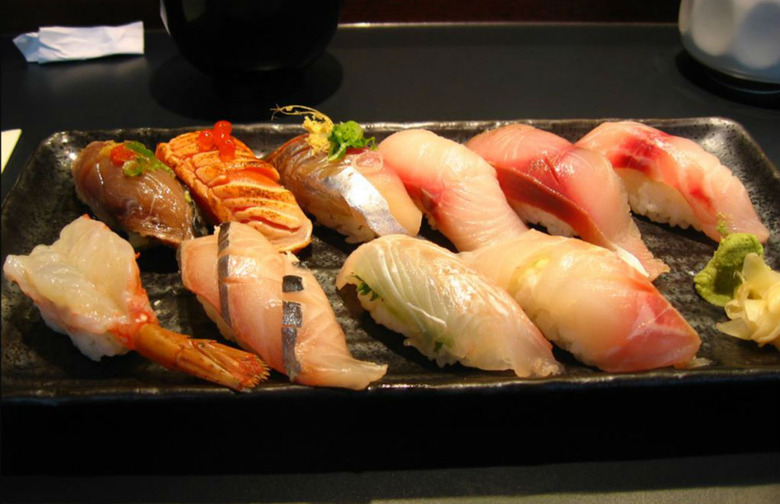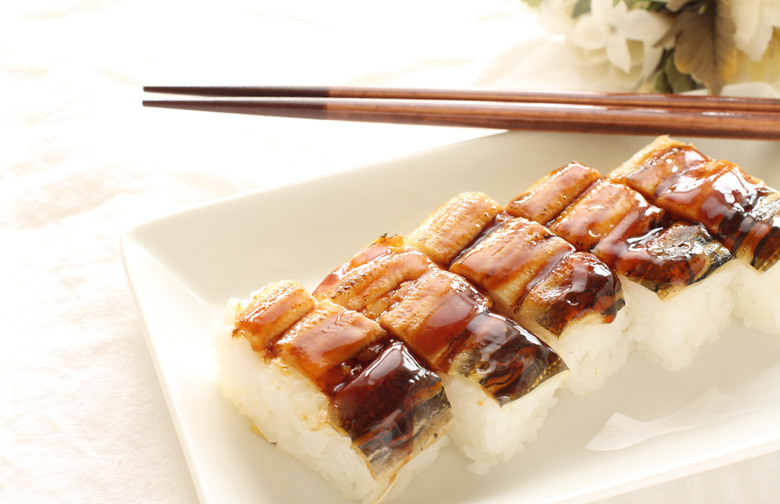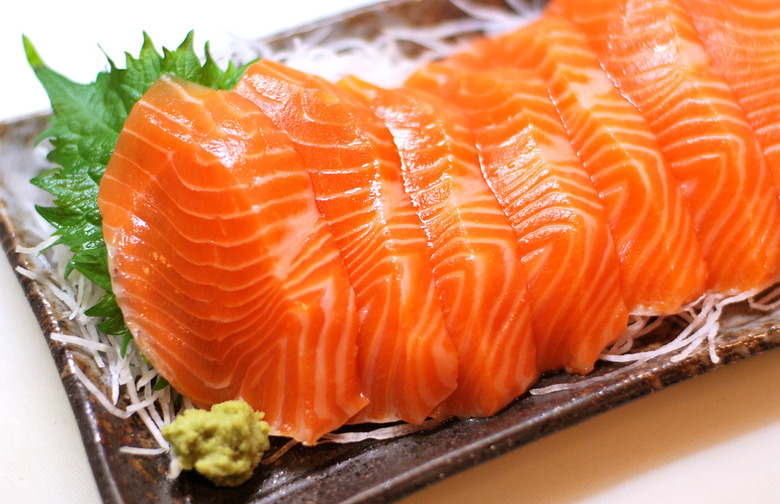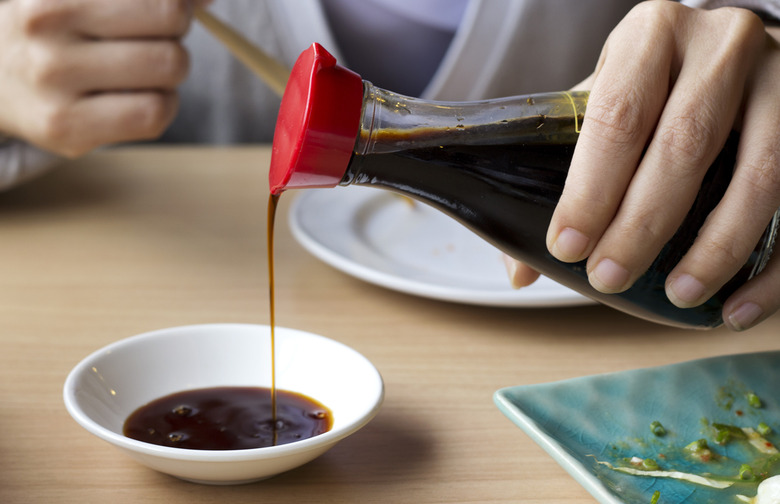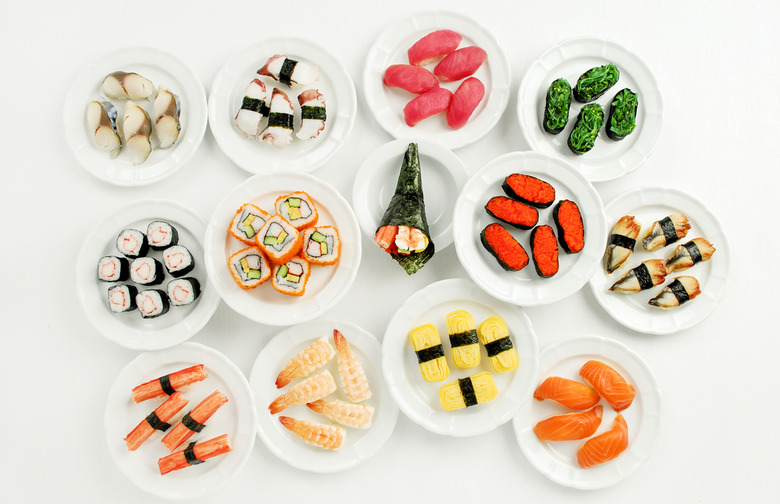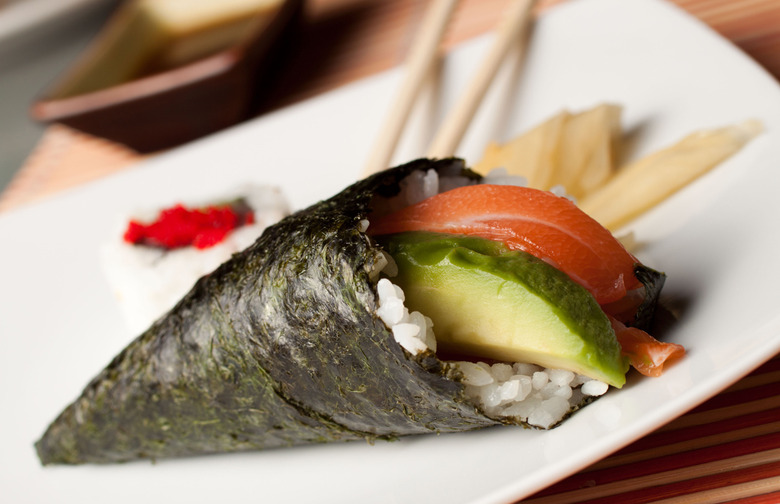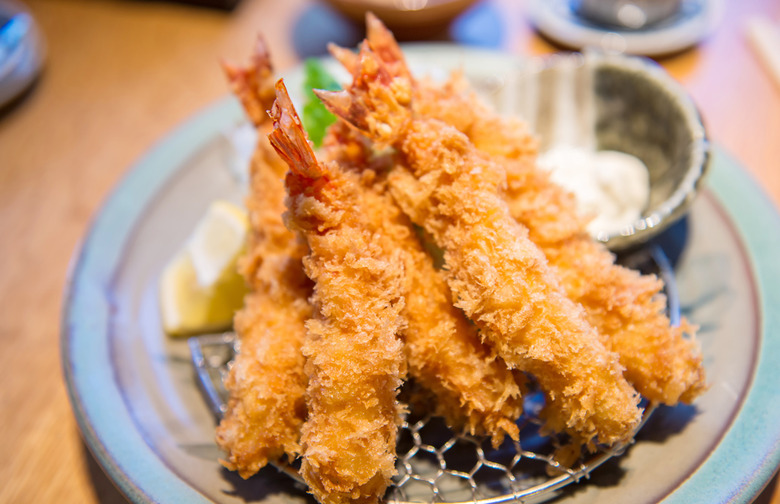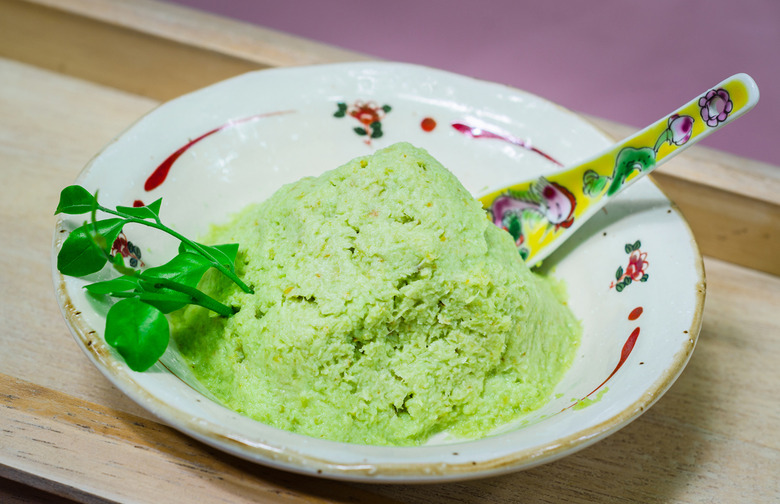16 Confusing Sushi Terms, Decoded
A meal at a sushi restaurant can be one of the most exciting culinary experiences you'll ever have. It can also be one of the most intimidating if you're not quite sure what all the words on the menu mean. But have no fear: We've gathered together the 15 most common sushi terms, from varieties of sushi to its individual components and condiments, so the next time someone asks you what the difference between maki and nigiri is, you'll be able to answer them like a pro.
Chirashi
Chirashi is a bowl of sushi rice topped with a variety of raw fish and vegetables or garnishes. The term translates to "scattered sushi."
Futomaki
These are thick sushi rolls that are generally two or more inches across and are usually vegetarian. Sliced relatively thinly, they often have three or more ingredients, chosen for their complementary colors and flavors.
Gari
The thin slices of pickled ginger that are served alongside sushi.
Gunkan-maki
This style of sushi is rolled so that the seaweed and rice form an oval "container" for a soft topping, like sea urchin, quail egg, or fish roe.
Maki-Zushi
Also called sushi rolls, maki is the style of sushi that's rolled up with rice and seaweed around a filling, then sliced into individual pieces. The rice can be either on the inside or the outside of the seaweed.
Neta
Neta is what the piece of fish that tops the sushi is called.
Nigiri-Zushi
As opposed to sushi rolls (maki), nigiri is the style of sushi with an oblong piece of hand-pressed rice topped with neta, or raw fish. Many sushi chefs will place a bit of wasabi between the rice and the topping.
Nori
Nori is the name given to the sheets of dried seaweed used to make maki.
Omakase
The sushi bar equivalent of a tasting menu, this generally pricey endeavor puts you entirely in the sushi chef's hands. While your meal could just be a selection of nigiri, it can also incorporate maki and cooked items.
Oshi-Zushi
Oshi is made by pressing rice into a special box, adding the topping, then pressing down on it with the top of the box. The resulting sushi is clean and compact, and is usually sliced into squares or rectangles.
Sashimi
The Japanese word for slices of raw fish. If you order sashimi, don't expect to receive any rice.
Shoyu
Japanese soy sauce, usually served alongside sushi. Always dip nigiri fish-side down into the shoyu, so the rice doesn't absorb it all and fall apart.
Sushi
The word sushi actually only refers to the seasoned rice, in the strictest sense, but it's conversationally an umbrella term for maki and nigiri. When you see the word "sushi" on a menu with neta options below, however, they're referring to nigiri; maki are generally in a section of their own.
Temaki-Zushi
Also called hand rolls, these are hand-rolled cones of seaweed filled with sushi rice, fish, and usually vegetables.
Tempura
Seafood or vegetables that have been dipped in a light batter and deep-fried. While this isn't a specific sushi term per se, many sushi restaurants also sell tempura, and some American-style rolls contain shrimp tempura.
Wasabi
Japanese horseradish; the little lump of green stuff served next to the ginger. The vast, vast majority of wasabi you'll encounter isn't real wasabi, however; it's generally a mixture of reconstituted American horseradish and mustard powder with green food coloring.

